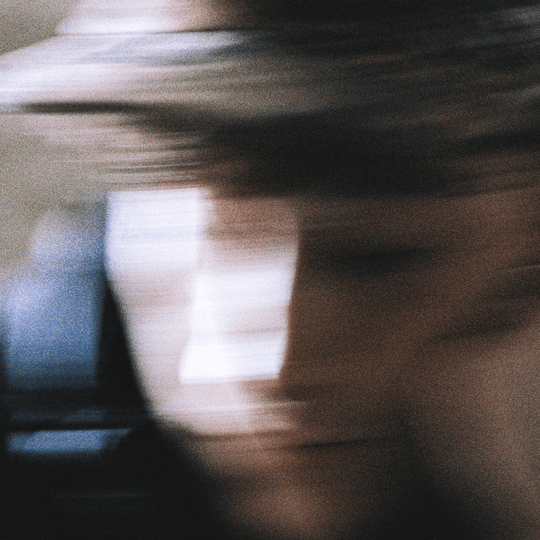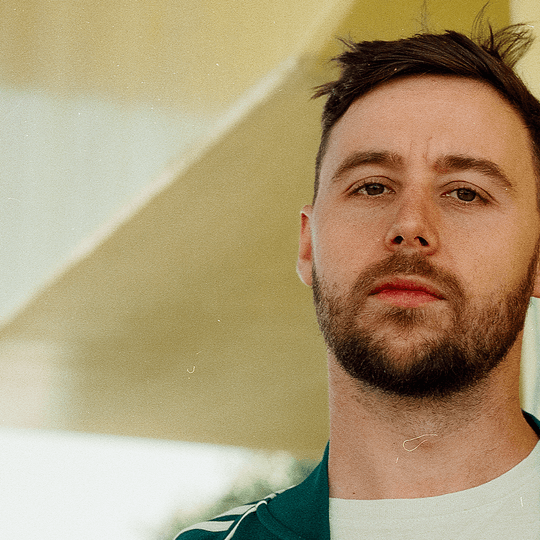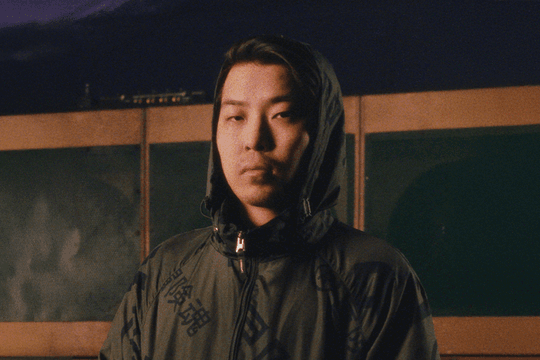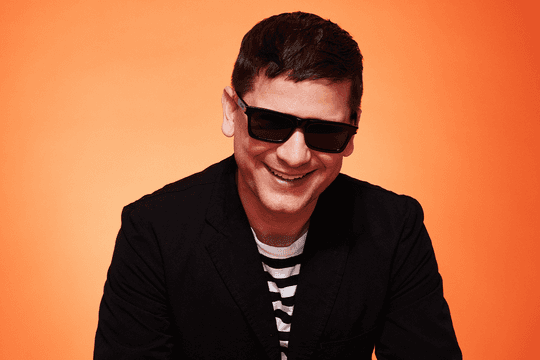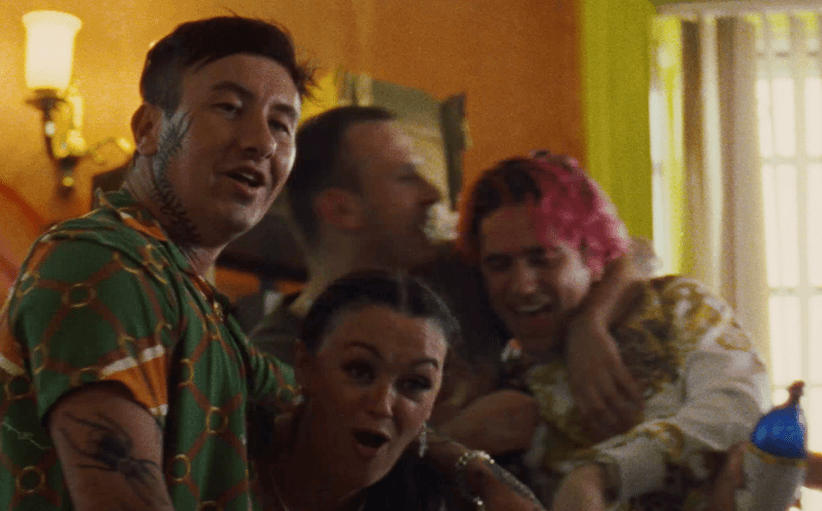Technique: Sensations' Fix
The recording studio
I moved to the States in 1969; I was living in a house in Virginia. I had put together a home recording studio in the basement so that we could record what we were playing at any given time. The core of the recording was an early TEAC TCA 40 series that was being advertised as ‘The Quadraphonic Series’.
I liked the modular approach; The Deck (TCA 40) was separated from the Recording Module (TCA 41). Both only had two tracks each, so in order to have four tracks, two TCA 41 units had to be purchased. I think I bought the whole thing at Lafayette in 1970 for around 700 dollars. Later on I also added their four track mixer to complete the recording studio.
Dark Side of Religion
In order to record this track we had to modify the TEAC machine to give it overdub capabilities, and in those days it was not simple, it was done by the process has known as Sel-Sync). Me and Jamie Wilson (who played bass and electric wizard) went to Ampex in Washington DC and they were nice enough to give us the schematics to modify the TEAC. We did it way before the company itself started doing it.
Fragments of Light
This track reflects our hippie attitude of the era. We were kind of visionaries so we thought of music as being more like a painting. We realised that sound was creating images in our brain.
In order to have those tracks sound good on a home recording studio we needed the dub ability so that I could play parts over and over until the sound was perfect. The MiniMoog Model-D Prototype was used for the soloing in this track. It was the first time that such an instrument was being shown in musical stores. It wasn’t for sale but I convinced the people from Moog to let me buy it before its distribution started in the USA.
I used a MiniMoog especially for its capability to make “boomin’ basses”, “standouts” and of course, strange noises. It could also produce good percussive sounds that didn’t sound at all like a drum. Its three oscillators can be routed and modulated with each other in a lot of unique configurations, which gives a lot of flexibility and synthesis capabilities. The open layout of the synth engine controllers (knobs and switches) made it easy to experiment and to make sounds quickly, allowing me to create unheard sounds.
Music is a Painting in the Air
Some equipment was added to the studio whilst I was staying in Italy. In one of my frequent flights to England in 1973 I bought a synth EMS VCS3, which had a Pitch to Voltage Converter with a built in VCA sawtooth oscillator, which was used in this track.
One main difference between a synth and a guitar or bass is that synths produce the sound through voltage whilst string instruments produce the sound because of the vibration of a string in the surrounding air. It takes 440 vibrations a second for a string to produce sound that creates the pitch of an A note. The voltage produces sound directly from electrical values so a device is needed to transform those air vibrations (pitch) into voltage to drive voltage bass oscillators or filters, which was the basic core of any synth at the time.
Crossing Berlin
This was the result of a Tarot reading session with a friend I met in Virginia who was going around town dressed like a medieval person. During the session, our minds were flying across nations, and Berlin stuck out. We felt we were some sort of antennae capturing the sounds coming from cities, and Berlin had inspired that. Jamie was playing an ARP Odyssey and I the MiniMoog.
Cold Nose
This was a project that was being done in conjunction with a device that I had bought in Los Angeles to measure voltage in our brain, basically an EEG device; it was an Alpha Theta machine. From electrodes placed on the scalp, the weak electrical activity generated by the brain was analysed. Relaxing (Alpha Waves) produces 4 to 8 cycles every second while creativity (Theta waves) occurs between 8 to 13 cycles and their mix around 6 cycles to 11 is the best for creating musical activity. Lights would turn on when your brain was producing those waves, and for me it meant turning on the recorder and recording the echoing pattern with the guitar or the MiniMoog.
Moving Particles
This song came out after digitising the tracks, being only a track from an outtake of Cold Nose. The name was inspired by the baking process.
Most of these reel to reel recordings are old, and age actually creates mould on them, so unless they are kept for years in special places where temperature doesn’t change, many of them require baking before being played. If you don’t do that, there is a risk of damaging the player; also, the tape will sound dull and distorted. Baking the tape temporarily restores it by driving the water molecules from the binder, so the mould will surface and can be wiped out.
I handled this using a Nesco American Harvest Snackmaster Pro FD50 Food dehydrator. It cost 80$, and with a little modification I was able to restore the tapes. I put the tapes on the shelves of the dehydrator, set the machine to 120–135 degrees for two hours, and made sure to turn the tapes every half hour. Afterwards, I let them cool out for two hours before playing them. Later on, while playing on a four track machine, they were digitized using an M-Audio Soundcard (Quattro) and a couple of computer programs (Cubase and Fruity Loops).
The Left Side of the Green
This was part of the album Portable Madness, and that was a Sensations’ Fix band effort. At the time, Keith Edwards was playing the drums and Richard Ursillo was playing the bass, so it’s basically what the group was sounding like when we were playing live. In order to achieve our own sound and be able to control it, we decided not to use microphones very much. The whole band was going through a mixer of its own, all sounds were going to a PA system, and the amplifiers were valve based and placed into a cabinet, so it was a compact system.
Strangelands
In those days it was a very dangerous period to play music in Italy; there was too much political violence at concerts that were once attended peacefully. That led us back to overdubbing mode again, and to return once again to the USA. Going back to America was not easy; I had to sell most of the equipment I owned, all the synth and keyboards and the rest that was part of the sound creation. But having knowledge and will, I worked with a person called Gilbert Jullien who, being an electronic wizard himself, was interested in building a recording studio in his home basement.
This time, we managed to put together an eight track one inch machine from recorders used by the American government for satellite activity. They were sold at auction, being dismissed after years of activity. The mixing board was also put together by acquiring parts from other studios in the area. The studio sounded great and this is where we recorded ‘Strangelands’.
Chelsea Hotel (Room 625)
This is a reminder of the time I spent in the room of the Chelsea Hotel in New York, where I was staying while mixing the tracks at Secret Sound Studio. The whole ‘Vision Fugitive’ album was mixed there, giving me access to machines that we did not have at the time. The studio was owned by Todd Rundgren, a pioneer in pop music that I really liked. He was never there but the engineers he was using were incredibly good and open-minded, and that was the final pro touch that was needed.
RVNG Intl will release Sensations’ Fix’s Music is Painting in the Air on the 25th September, 2012 on 2xLP, 2xCD, and digital formats.



